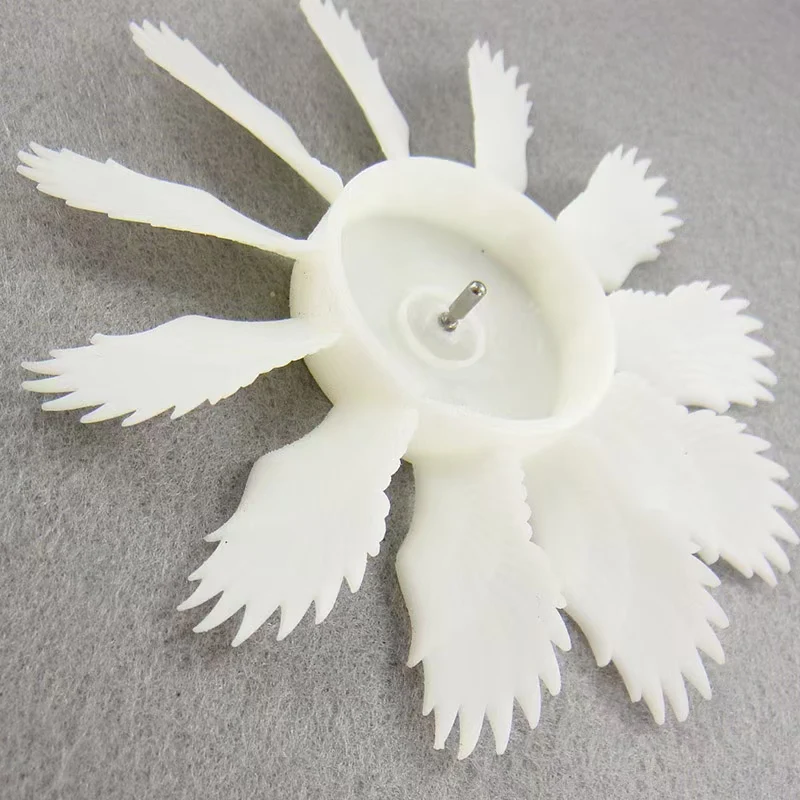- English
- Español
- Português
- русский
- Français
- 日本語
- Deutsch
- tiếng Việt
- Italiano
- Nederlands
- ภาษาไทย
- Polski
- 한국어
- Svenska
- magyar
- Malay
- বাংলা ভাষার
- Dansk
- Suomi
- हिन्दी
- Pilipino
- Türkçe
- Gaeilge
- العربية
- Indonesia
- Norsk
- تمل
- český
- ελληνικά
- український
- Javanese
- فارسی
- தமிழ்
- తెలుగు
- नेपाली
- Burmese
- български
- ລາວ
- Latine
- Қазақша
- Euskal
- Azərbaycan
- Slovenský jazyk
- Македонски
- Lietuvos
- Eesti Keel
- Română
- Slovenski
- मराठी
- Srpski језик
Urethane Casting Materials
When it comes to producing high-quality, detailed prototypes and end-use parts, urethane casting stands out as a versatile and cost-effective manufacturing method. This process is ideal for low to medium volume production runs, offering exceptional surface finish and the ability to replicate complex geometries. The success of this technique hinges on the materials used, particularly the specialized resins and equipment. For optimal results, selecting the right Urethane Casting Resin is paramount, as its properties directly influence the final part's strength, flexibility, and clarity. The entire Urethane Casting Process involves creating a silicone mold from a master pattern and then pouring the liquid resin into it. To ensure consistency and efficiency, many manufacturers utilize an advanced Urethane Casting Machine, which automates mixing and dispensing to minimize air bubbles and waste. For applications requiring transparent or translucent parts, such as lenses or light pipes, a Clear Urethane Casting Resin is the go-to material, providing optical clarity alongside durability.
Our flagship product, the UltraCast Pro Series Urethane, has been engineered to meet the rigorous demands of modern manufacturing. This material system offers a superior combination of mechanical performance and ease of use. Below is a detailed breakdown of the critical specifications for the UltraCast Pro Series Urethane. This data is essential for engineers and designers to make informed material selections for their specific projects.
Key Material Properties
- High Impact Resistance: Withstands significant physical shock without cracking.
- Excellent Abrasion and Tear Strength: Ideal for parts subject to wear and friction.
- Superb Dimensional Stability: Maintains its shape and size under various environmental conditions.
- Resistance to Oils, Greases, and Many Chemicals: Ensures longevity in harsh operational environments.
- Wide Range of Available Hardness: From very soft, flexible elastomers to rigid, hard plastics.
Technical Specifications
| Property | Test Method | Value/Result |
|---|---|---|
| Mixed Viscosity | ASTM D2393 | 450 cps |
| Pot Life | ASTM D2471 | 10 minutes |
| Demold Time | - | 16-24 hours |
| Shore Hardness | ASTM D2240 | 70A - 85D |
| Tensile Strength | ASTM D412 | > 4000 psi |
| Elongation at Break | ASTM D412 | > 250% |
| Tear Strength (Die C) | ASTM D624 | > 400 pli |
| Heat Deflection Temperature (HDT) | ASTM D648 | 70°C @ 66 psi |
Color and Processing Options
- Standard Colors: Clear, White, Black.
- Custom Colors: Available upon request with precise color matching services.
- Mix Ratio: 1A:1B by weight or volume.
- Cure Schedule: Room temperature cure; post-cure options available for enhanced properties.
Hot Products
Ejector Pin and Ejector Sleeve
The Mudebao Ejector Pin and Ejector Sleeve, crafted by a reputable China-based manufacturer and supplier, embodies exceptional quality that sets it apart in the market. As a dedicated producer, our company specializes in the manufacturing of precision mold components for various industries, ensuring every product meets the highest standards of durability and accuracy.Aluminium CNC Parts
The Mudebao Aluminium CNC Parts stand as a testament to the pinnacle of precision engineering, emanating from the skilled hands of a pioneering manufacturer nestled in the heart of China. As a reputable supplier with a proven track record, we pride ourselves on offering a comprehensive portfolio of aluminium CNC parts that encapsulate the essence of innovation and precision.Zinc CNC Parts
The Mudebao Zinc CNC Parts represent the epitome of precision and craftsmanship, emanating from a renowned manufacturer and supplier situated in China. As a leading player in the industry, we specialize in offering a comprehensive range of zinc CNC parts that are meticulously designed and manufactured to meet the most stringent quality standards.3D Printing
Mudebao 3D Printing, a leading manufacturer and supplier from China, excels in delivering high-quality 3D printing solutions to a diverse range of industries worldwide. With years of expertise in the field, we specialize in offering cutting-edge 3D printers that embody the very essence of precision, reliability, and innovation. Our products, crafted with meticulous attention to detail, are designed to meet the most stringent quality standards, ensuring customers receive nothing short of excellence.Urethane Casting
Mudebao Urethane Casting, a reputable manufacturer and supplier from China, specializes in offering premium-quality urethane casting solutions to a diverse range of industries. With years of experience and expertise in the field, we have established ourselves as a leading provider of custom-made urethane parts and products that meet the highest standards of quality and performance.Urethane Casting Process
Mudebao, a leading brand in China's polyurethane casting process industry, has firmly established itself as an industry benchmark for providing high-quality customized polyurethane components and products, thanks to years of deep accumulation and continuous innovation in this field. We are committed to meeting the diverse needs of global customers with exquisite craftsmanship and excellent service, becoming a trusted partner.
















